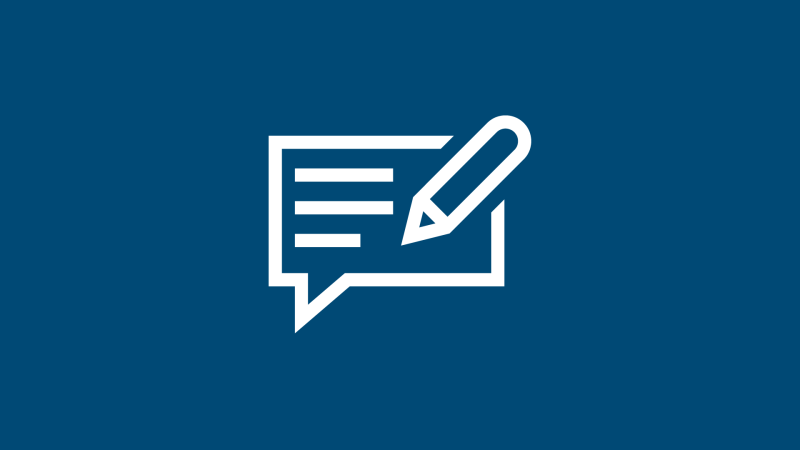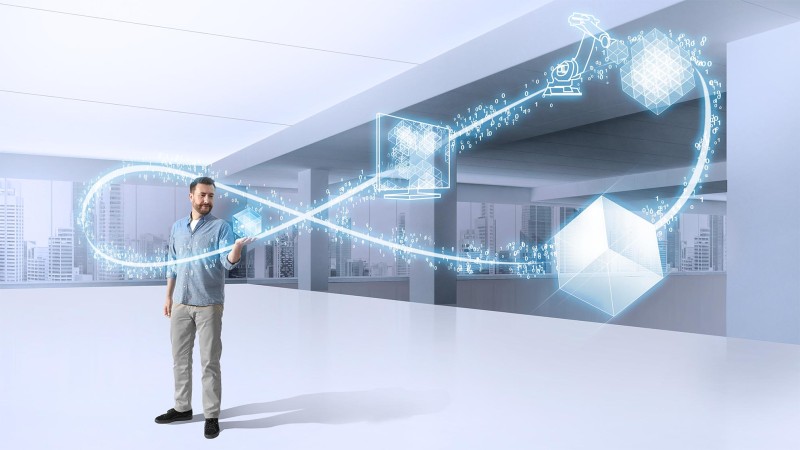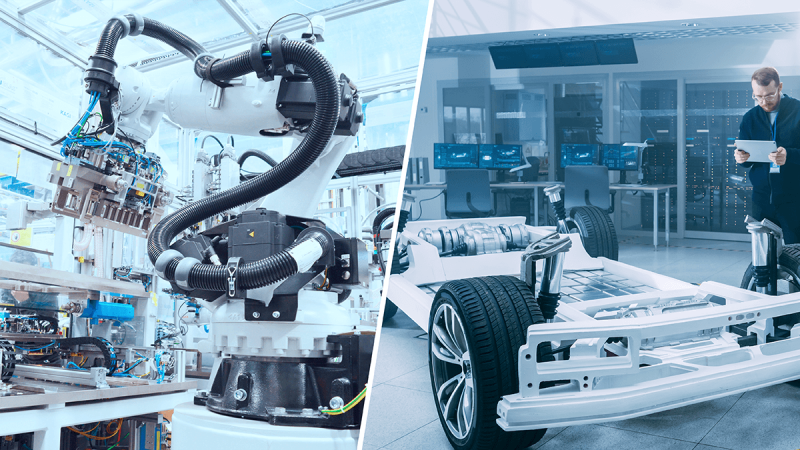Return, repair, reuse, recycle: the role of digital twins in the circular economy
Welcome back to “Sustainability Insights”, our blog series on sustainable engineering! Today, we want to take a closer look at the circular economy: what is it all about, which new business opportunities does it create, and how is it connected to digitalization and digital twins?

Circular economy and the European Green Deal
The circular economy is a model of production and consumption aiming to keep resources in the economy for as long as possible. Instead of the traditional, linear “take-make-use-dispose” model, products are shared, leased, reused, repaired, refurbished, and recycled. This reduces waste as well as resource and energy consumption and is key to reducing biodiversity loss: According to the EU, 90 % of biodiversity loss is caused by resource extraction and processing.
The EU’s circular economy action plan is therefore crucial to achieving the climate neutrality target laid out in the Green Deal. It focuses mostly on sectors with especially high resource usage and a high potential for circularity, such as electronics, batteries and vehicles, packaging, plastics, textiles, construction and buildings, food, water and nutrients. But how exactly is business possible – and feasible – in a circular economy?
Achieving business success in the circular economy
Circularity offers new opportunities for businesses and consumers alike. Keeping materials in the economy for as long as possible allows for ongoing value creation from the same materials, more resilient value chains, the creation of local quality jobs and savings for consumers. Three of the most important business models include:
1. Product life extension
This model relies on extending a product’s lifespan through more durable design as well as through repairs and reusage. One of the main benefits for manufacturers lies in reduced production costs: reusing materials from damaged products means less raw material is needed to produce new ones. Bosch Power Tools, for example, remanufactures its used tools, which enables it to stay competitive with low-cost producers.
2. Retain product ownership
In this business model, a company rents or leases its products instead of selling them, retaining responsibility for their maintenance and upgrades. As the focus lies on product performance instead of sales volumes, this results in lower material costs. Additionally, producers gain valuable insights into the usage of their products. Colleagues from Bosch’s Dutch BSH subsidiary made use of this in the social Papillon project: washing machines were rented to low-income families, which enabled Bosch to collect information on functionality as well as helpful methods for reusage.
3. Design for recycling
Companies using this approach aim to maximize the ease and effectiveness with which used materials can be recovered during recycling. The goal is to extract as much value as possible from a product that has reached the end of its lifespan. For example, Bosch has developed a new deep-discharging process to deactivate automotive batteries in just a few minutes – allowing for an easier and much more efficient recycling process.
Digitalization as cornerstone of the circular economy
All these business models have one crucial thing in common: they rely heavily on digitalization. There is no circular business and no circular economy without data and traceability. To analyze and optimize material flows and processes from the raw materials right through to recycling, the resources used in a product’s manufacturing, selling and servicing must be connected and traced – which means gathering and sharing information on their quantity, location, and condition. All this data can be stored in digital product passports – which are one big part of the EU’s circular economy action plan. For instance, product passports for all EV and industrial batteries will become mandatory from 2027.
Digital twins are a key technology in the entire traceability process: as digital representatives, they accompany their physical product counterparts throughout their lifecycle, grouping all relevant data in so-called aspects. Thousands of digital twins are created in manufacturing processes every day. Choosing an efficient way to manage, store, assign, and share all these digital twins and their aspects is a crucial challenge for the circular economy.

Bosch Semantic Stack: the solution for data ecosystems
One of the solutions is our Bosch Semantic Stack. It holds all the tools needed to manage digital twins and share them in data ecosystems: from the digital twin registry, which works like a phone book for the management of a constantly growing number of digital twins, to the aspect model catalog, which acts like a recipe collection for different aspect models. These tools are the basis for a large number of circular economy use cases in the future, like the battery product passport.
The digital twin registry in particular is key for these use cases: each digital twin is defined along with its aspects, information on the used aspect model, and its data endpoints. Even hundreds of thousands of digital twins can be easily managed in the registry – from their registration to their modification and eventual deletion. The digital twin registry thus acts as secure intermediary between data endpoints and queries for all phases of a product’s lifecycle, enabling secure data exchange without autonomy loss even between different companies in data ecosystems.
Our goal is to enable all organizations across the entire product lifecycle to manage and exchange data securely using homogeneous semantics and industry-specified standards.
What’s next for the circular economy?
When it comes to establishing an international or even global circular economy, there is still a lot to do. While first data spaces like Catena-X have already been established, many industries are still at a very early stage with regards to data ecosystems. We’re convinced that an open-source approach – like the one used in our Bosch Semantic Stack – is the basis to solving the challenges of the future: it unlocks technologies for everyone and opens up new data-driven and circular business models.
Further information and sources:
Get in touch with us
Monday – Friday, 9 a.m. – 4 p.m. CET



